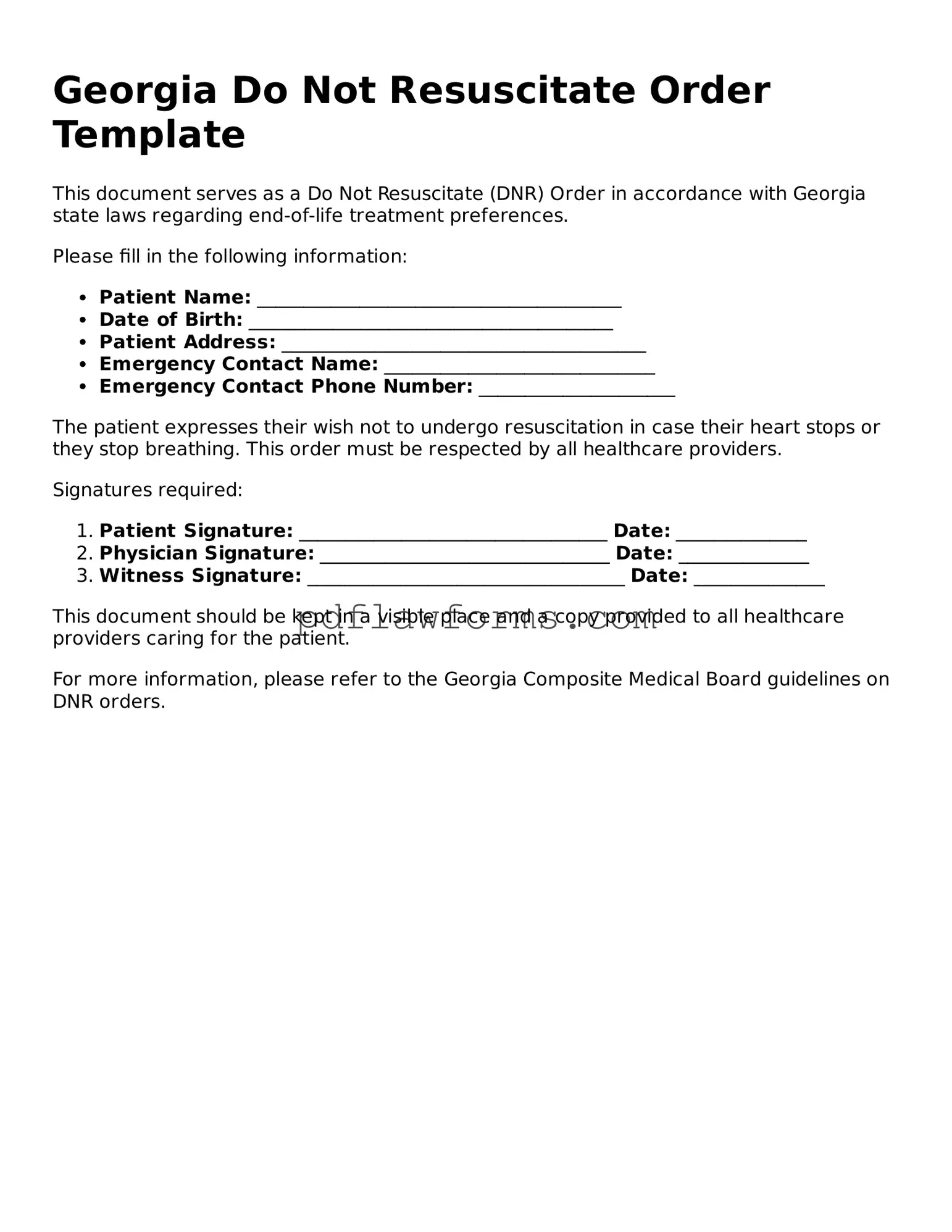Do Not Resuscitate Order Form for the State of Georgia
A Georgia Do Not Resuscitate Order (DNR) form is a legal document that allows individuals to express their wishes regarding medical treatment in the event of a life-threatening situation. By completing this form, you can ensure that your preferences for resuscitation are clearly communicated to healthcare providers. Understanding the importance of this document can help you make informed decisions about your health care.
Take control of your medical decisions today by filling out the DNR form. Click the button below to get started!
Make My Document Online
